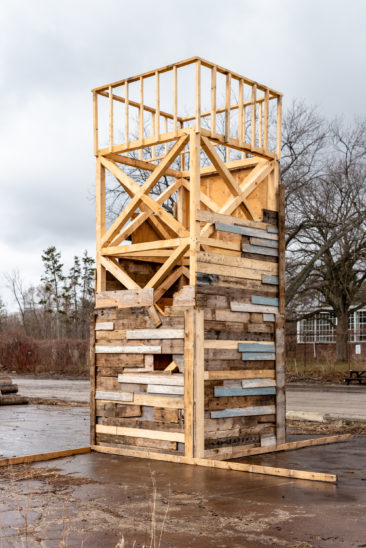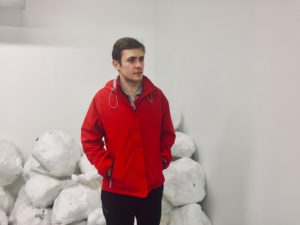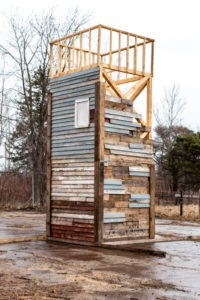
The Toronto Biennial of Art is Canada’s leading visual arts event focused exclusively on contemporary art from around the world. Over the 10 weeks (ending June 5), local, national and international Biennial artists are transforming Toronto and its partner regions with free exhibitions, performances and learning opportunities. Entrance is free to all sites, which include Fort York, the Textile Museum of Canada, Colborne Lodge and others. More information is available at torontobiennial.org.

An interesting addition to this year’s roster of artists is a young Lithuanian artist, Augustas Serapinas. He was born in 1990, in Vilnius, Lithuania, where he lives and works. He completed his BFA at the Vilnius Academy of Arts in 2013. His work was recently included in the RIBOCA2 Riga International Biennial of Contemporary Art; the 58th Venice Biennale (2019); the Baltic Triennial 13, Vilnius; and Kunsthalle Wien, Vienna. Solo exhibitions have been held at P/////AKT, Amsterdam; Emalin, London; Apalazzo Gallery, Brescia; CURA Basement, Rome; David Dale Gallery, Glasgow; Fogo Island Arts, Newfoundland; and SALTS, Basel. In the Toronto Biennial, his work is displayed by the Small Arms Inspection Building at Lakeshore and Dixie (Tuesday to Sunday, 10am to 6pm).
Augustas Serapinas’s sculpture originated in Fogo Island, Newfoundland. Created from the material of an abandoned shed on the island, it references the island’s boat-building history as well as the social and functional role of these modest structures. The vernacular architecture found in Fogo is synonymous with life and livelihood lived in tandem with the water, as well as with the houses and sheds built by boatbuilders.
 Modest wooden sheds, often brightly painted, with peaked roofs, dot the shoreline of the island. They are places to store nets, boats, and equipment, to clean and salt fish, and sometimes, to gather. Augustas’s shed came from Barr’d Islands, where it had gone through different iterations of construction. Locals recalled that this was the third time that a similar structure had been rebuilt with the same materials, each time with a slightly different configuration of nails, wood, flooring, and shingles. The shed has also taken on more contemporary building additions, including vinyl siding, wallpapered panels, and a front door repurposed from another structure. History is held in its walls, too, and visible in its layers of paint and inscriptions.
Modest wooden sheds, often brightly painted, with peaked roofs, dot the shoreline of the island. They are places to store nets, boats, and equipment, to clean and salt fish, and sometimes, to gather. Augustas’s shed came from Barr’d Islands, where it had gone through different iterations of construction. Locals recalled that this was the third time that a similar structure had been rebuilt with the same materials, each time with a slightly different configuration of nails, wood, flooring, and shingles. The shed has also taken on more contemporary building additions, including vinyl siding, wallpapered panels, and a front door repurposed from another structure. History is held in its walls, too, and visible in its layers of paint and inscriptions.
As a means of speaking to this resourcefulness – the material necessity of making use and reuse of what is at hand – Augustas has continued to transform the shed. With each rebuilding, a new structure is generated from the original materials. The first shed looked something like the original, but walking around it revealed that it was no wider than a closet, purposely narrowed to fit the confines of the gallery entrance. It also functioned as its own shipping container as it migrated to other venues, with the roof fitting into its interior, transforming the entire work into a crate.
In Toronto, the shed will undergo one final transformation. The artist, working together with Sawmill Sid, who runs a local milling service and lumber yard, will take the structure apart piece by piece and remake it into a towering lighthouse. Installed near the waterfront of Lake Ontario, Augustas’s proposed beacon will be visible from the Small Arms Inspection Building. “Rather than guiding ships, however, it is a beacon to the transformative potential of even the most humble of materials.” Read more about Serapinas on news.artnet.com.
Picture from Artsy.net





























